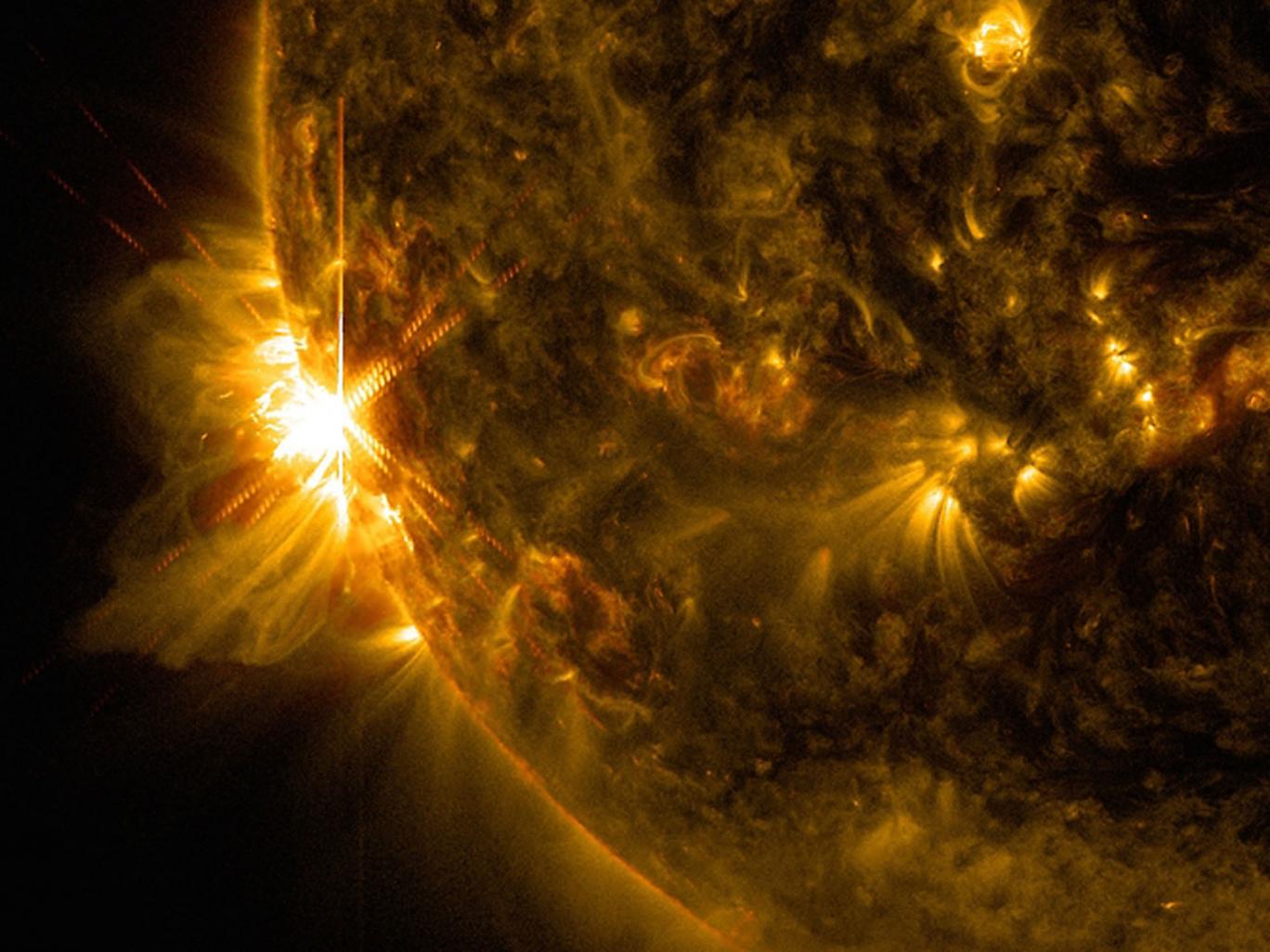The sun could spew out huge superflares and put life on Earth in danger
The energy from the flares could be equivalent to a billion megaton bomb, destroying communication and energy systems

Your support helps us to tell the story
From reproductive rights to climate change to Big Tech, The Independent is on the ground when the story is developing. Whether it's investigating the financials of Elon Musk's pro-Trump PAC or producing our latest documentary, 'The A Word', which shines a light on the American women fighting for reproductive rights, we know how important it is to parse out the facts from the messaging.
At such a critical moment in US history, we need reporters on the ground. Your donation allows us to keep sending journalists to speak to both sides of the story.
The Independent is trusted by Americans across the entire political spectrum. And unlike many other quality news outlets, we choose not to lock Americans out of our reporting and analysis with paywalls. We believe quality journalism should be available to everyone, paid for by those who can afford it.
Your support makes all the difference.The sun could unleash huge superflares that would destroy much of the things we rely on for life on Earth, scientists have warned.
Huge flares of energy with the power of a billion one megaton nuclear bombs could destroy our communication and energy systems, they have said.
Scientists made the warning after seeing a huge superflare erupt from another star that looks alarmingly like our own Sun.
Occasionally, flares and other solar weather upset communications systems on Earth. But the effects are usually relatively limited, and can be recovered from. But the new study suggests that any potential superflare could cause
Flares happen when magnetic energy that has built up in the solar atmosphere is suddenly released, causing a massive outburst of radiation.
Lead scientist Chloe Pugh, from the University of Warwick, said: "If the Sun were to produce a superflare it would be disastrous for life on Earth; our GPS and radio communication systems could be severely disrupted and there could be large-scale power blackouts as a result of strong electrical currents being induced in power grids."
She added: "Fortunately the conditions needed for a superflare are extremely unlikely to occur on the Sun, based on previous observations of solar activity."
The superflare studied by the team occurred on the binary star KIC9655129.
Using data from the American space agency Nasa's Kepler space telescope, the scientists determined that it had wave properties identical to those seen in solar flares.
Co-author Dr Anne-Marie Broomhall, also from the University of Warwick, said: "This result is ... an indication that the same physical processes are involved in both solar flares and stellar superflares. The latter finding supports the hypothesis that the Sun is able to produce a potentially devastating superflare."
The research is reported in the Astrophysical Journal Letters.
Additional reporting by Press Association
Join our commenting forum
Join thought-provoking conversations, follow other Independent readers and see their replies
Comments